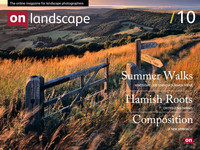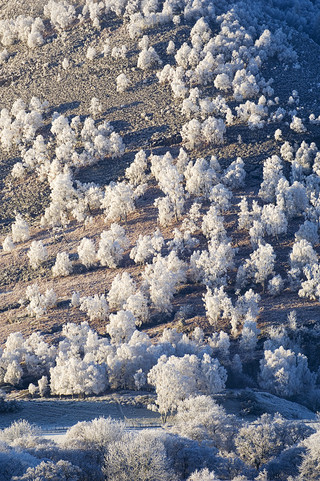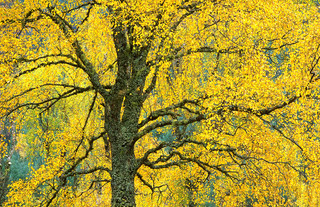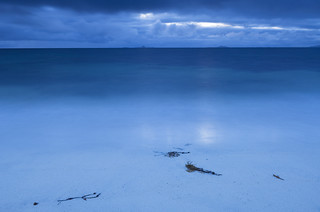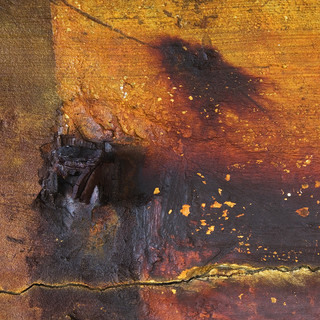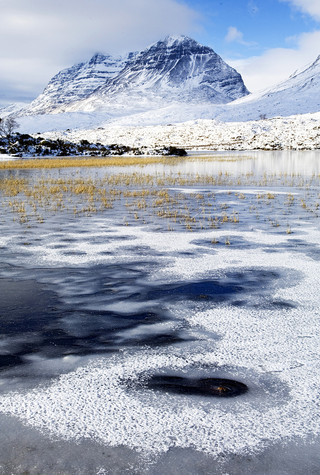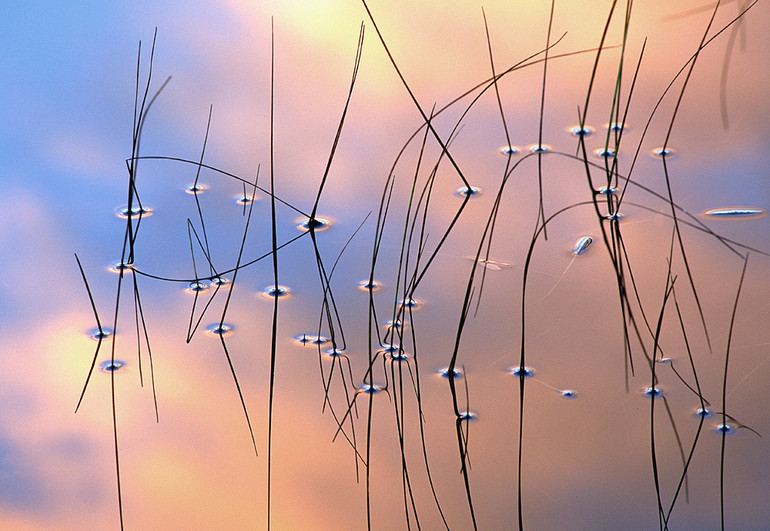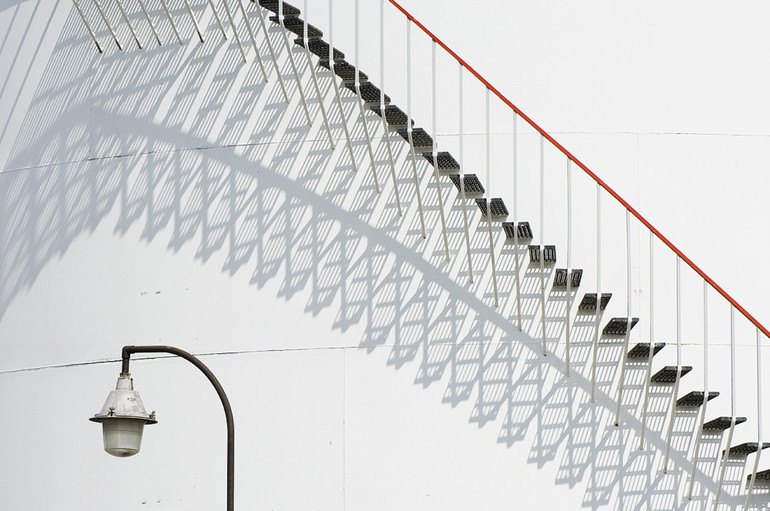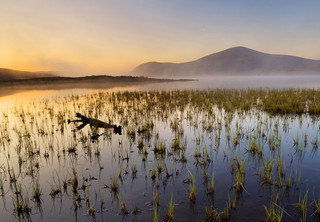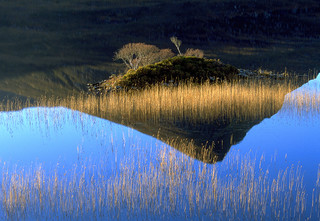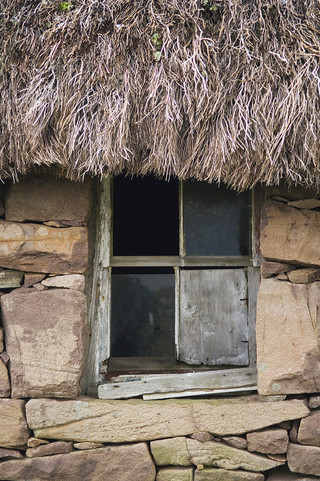Featured photographer

Tim Parkin
Amateur Photographer who plays with big cameras and film when in between digital photographs.
I first saw Iain's work on flickr about two years ago, just as he was posting some of his old Velvia slides and some of his current work and was very impressed at his sense to composition and use of texture/pattern in nature. We chatted on the phone last week and he told me a little about himself, an ex-print designer who lives just north of Inverness (lucky blighter) and we sent him the usual questions which he has answered in some detail. As an aside, if anybody has any suggestions of additional questions we could ask photographers in this section, please let me know. So here we are .. Iain Sarjeant..
In most photographers lives there are 'epiphanic moments where things become clear, or new directions are formed. What were your two main moments and how did they change your photography?
I suppose for me, my epiphanic moments have involved the discovery of certain photographers and the way they look at the world. Since I was a child I have spent a lot of time outdoors, exploring both close to home and around the Highlands, and I have always taken photos to record the places I’ve been and anything that has interested me. But I would have to say that discovering the photography of Jan Tove in the late nineties had a huge impact on me and the way I went about capturing images. But I’ll explain more in the next question, as I notice it is about that specifically.
The second photographer whose work has had a massive impact on me is Danish photographer Keld Helmer-Petersen. I purchased his book ‘Photographs 1941–1995’ about 5 years ago and was immediately inspired by it. Not a landscape photographer as such, Keld’s style is modernistic and experimental. Often working with architectural, industrial or urban subject matter, he creates beautiful abstract compositions out of the mundane and ordinary – things we all walk past most days, tarmac, paint, metal etc. I was already seeking through my photography to capture beauty in the more everyday countryside, steering away from the famous dramatic locations. I enjoy simple compositions of branches, moss, rocks where the location is not obvious. However, Keld’s work opened my eyes to a similar range of possibilities in the built environment – fascinating patterns, colours, textures in the most overlooked of places. I now spend much more time in industrial estates as well as out in the wilds!!
I had previously made a connection between your work and that of Jan Tove and since then you have mentioned that he is a big influence. Can you explain what it is about Jan Tove’s work that so inspires?
In the nineties I was a little disillusioned with the more formulaic landscape and nature photography being done in the UK – while it accurately recorded the landscape, to me it lacked emotion and an artistic quality. There were certain photographers in the US who’s work I enjoyed and who I felt captured this better, such as William Neill, Jack Dykinga and Eliot Porter, but across the Atlantic we seemed to lag behind. However, in the late nineties I came across Jan Tove’s work and in 1999 saw him give a talk at the Scottish Nature Photography Fair. I was blown away and immediately bought a copy of his book ‘Speglingar’. Here were landscape and nature images from the heart – images that spoke as much about Jan’s relationship with the landscape as they did about the landscape itself. He masterfully composed images with incredible attention to detail of composition, colour & texture, each an individual work of art. This was someone expressing their relationship with the landscape in a way that I felt I could relate to. I feel a very personal relationship with the Scottish Highland landscape and was inspired to try to express myself through images of this kind. This marked quite a change in my photographic outlook and was a major influence in the style of my images. I since saw Jan speak again at the Scottish Nature Photography Fair in 2003 and bought his book ‘Beyond Order’, another stunning volume, and possibly my favourite Landscape/Nature Photography book. I know you have featured Jan Tove before, and I would strongly urge any photographers not familiar with his work to seek him out.
Both myself and Dav Thomas have a background that includes graphic design, as does Andrew Nadolski. We talked on the phone about the fact that one of you other life careers was as a print designer. Do you think a background in graphic design makes a difference to your compositions (and how)?
I think that having a background in design helps in a few ways. Firstly, and perhaps most importantly I think it helps develop a strong sense of composition and balance. In many ways creating an image that works is not so different from creating a design that works – dealing with issues of composition, colour, leading the viewers eye. I am very drawn to simple but strong graphic compositions with my photography.
For me creating images that work is all about balance, and not about compositional rules. I feel that images which rigidly follow rules tend to lack originality, no matter how expertly they are executed. I suppose you could argue that maybe it’s useful to learn the rules just so that you are better equipped to break them! But I think the most important thing to work on is balance in images. And for me I like to break images down to quite minimalist compositions, playing with the layout of the subject elements.
I suppose one other advantage of having a background in design from a commercial point of view is that it gives you an insight into the publishing world, how images are used, a chance to be the person buying in photography. In my commercial work this has made me very sensitive to designers needs with issues like leaving space for text etc.
Could you tell us a little about the cameras and lenses you typically take on a trip and how you came to choose them.
My main interest in photography has always revolved much more around the artistic side rather than the technical. I’m guilty of only really learning enough of the technical side of photography to allow me to create the kind of images I wish to, and I always feel I should take the time to learn more, particularly processing. All of my early images were taken on a basic manual Nikon FM2, a cracking little camera, armed with Fuji Velvia.
After going full-time I was tempted to move up to medium or large format but decided for practical commercial reasons to go digital. I felt from the outset I should go for the best package I could afford and asked around friends for recommendations. Nature photographer Laurie Campbell was a big help, giving me some great advice on lenses. In the end I bought the Nikon D2X together with 17-55mm f/2.8, 70-200mm f/2.8 and a 60mm f/2.8 macro lenses – all Nikkor. I use a Gitzo tripod and Lee ND grad filters. This is still the kit that I take out into the field and covers me for all the types of images I take. I find the quality superb but I still miss that Velvia punch!
I wouldn’t rule out a return to film in the future for my personal work – I think medium or large format would be very compatible with the way I work.
After my recent tirade against 2x3 ratio photographs (well, OK, I only suggested that it was a more ‘difficult’ ratio) you go and prove me wrong in many ways. Do you think about the aspect ratio at all and how do you feel about cropping?
I have always worked with this ratio so to a degree it is just what I’m used to. With wider landscapes I like to create an image which flows, leading the viewer through the scene, introducing various elements (not always predictably) and I find this format satisfying for my style of photography. However, I have been experimenting quite a bit recently with a square format and am enjoying that very much. It’s very different in terms of composition and I hope at some point to do a project working purely with this format. In terms of square images I do obviously crop (although I normally envisage the composition when creating the image in the field), but generally I prefer to take the time to capture all images in camera and rarely crop afterwards.
I notice your personal work section mixes up urban/architectural and landscape photography, what inspires you about this different genre?
Yes, the last few years has seen me widen my interest into architectural subject matter - landscapes of the built environment. This has been partly due to the influence of Keld Helmer-Petersen and other other photographers. The clean shapes and colours of modern architecture provide great possibilities, but I particularly enjoy finding interest in functional, everyday structures as well as industrial sites.
I don’t see this as a change in direction, as I will always have a passion for exploring the natural landscape around me. I see it more as a widening of my interest, a recognition of form and beauty in the most unlikely of places.
Tell me what your favourite two photographs are and a little bit about them.
It’s very difficult to choose 2 favourites, so I’m going to pick one old velvia shot and one more recent:
This image was shot about 10 years ago on my way home from a shoot in Glen Affric. I was driving past a small lochan at the side of the road about 45 minutes after sunset when I saw the remaining colour in the sky reflected in the perfectly still water. I found a place to pull over, stuck a longer lens on and spent about 15 minutes playing around with the reeds and reflections forming abstract patterns against the rich colours.
This is one of a series of images I’m working on exploring everyday structures. It’s a detail from one of the gas storage tanks in the industrial estate in Inverness but it could be anywhere. I like the simplicity of the image, the red hand rail adding a splash of colour, and the lamp balancing the diagonal line of the steps. A simple image but one which is a personal favourite.
When you are ‘in the field’, what is your usual workflow? i.e. How do you find a picture? Do you take sketch shots and then go back to a choice spot and wait for light? etc.
I react very much to the weather conditions on a certain day as to what subject matter I will try to tackle. Strong light will tend to lead me to work on wider shots, whereas flatter, overcast conditions will more often see me tackling details and abstracts. But there’s no hard and fast rules! I often have a rough idea of a location and type of image I am going to work on but very much leave myself to react to new ideas and subjects which I might come across. If I’m travelling to an area I don’t know I will do a little research, but always try to allow myself to be spontaneous.
I often see a possible image when I’m out and about and the light is not right, or I’m not able to stop for whatever reason. I don’t actually take sketch shots, but keep a notebook on me at all times for ideas, locations to return to etc. and often revisit the same location. In fact I agree with many others that getting to know a place intimately leads to stronger images.
I spend a lot of time waiting for the light – if I feel I have a potentially strong image and the right conditions look possible, I will prepare the shot and spend considerable time hoping and waiting. Doesn’t always pay off but worth it when it does!
Your photographs come across as quite rich without being over saturated, do you do anything special in post processing?
I have always been fond of rich colours in my photography and working with Velvia certainly helped with this! Since moving to digital capture I still strive to create rich colours but this requires a little work in processing. I shoot everything in RAW and as most will know, images tend to be quite flat when downloaded from the camera. However, while I like rich colours, I find over-saturation can really spoil an image so I take care to just to tweak the curves and saturation a little – I try to keep processing to a minimum, and keep the image as true to what was in front of me as I can.
What sorts of things do you think might challenge you in the future or do you have any photographs or styles that you want to investigate? Where do you see your photography going in terms of subject and style?
I intend to continue exploring the built environment, and like the idea of creating more social landscapes – including people and their effects on the land. I enjoy the work of Stephen Shore, Joel Sternfeld and Ed Burtynsky and feel quite drawn to seek a wider picture of the Highlands.
Within my personal work I am tending to work on a number of themes or long-term projects - I am enjoying this way of working, and seeing which way they go. I might have the possibility of a solo gallery show next year and this may give me a chance to work one series up to a finished state. An example of one such project I’m working on is looking at WW2 archaeology within the Highland landscape.
However, no matter which direction I explore I will always have a passion for capturing the light and natural landscape of the Scottish Highlands – it has such a unique character.
Who do you think we should feature as our next photographer?
I would enjoy a feature on Marcin Bera, Dan Holdsworth or Hans Strand.
In terms of “master photographers” you’ve already covered a few of my obvious favourites… but maybe Ed Burtynsky or Josef Hoflehner?
Olaf Otto Becker’s large format images of the Arctic would also be great to feature.
Well - Many thanks for Iain for another great interview. You can see more of Iain's work at http://www.iainsarjeant.com and you might be interested to know that his first book, released last year, has come third in the Scottish Nature Photography book awards. Read Iain's book review & Tim's interview with Iain.
You can buy this book from the Orcadian online bookshop here.
- Birch Tree in Autumn
- Birch Trees in Heavy Frost
- Blue Ocean, Isle of Iona
- Echoes of War
- Liathach from Loch Clair
- Loch Droma at Dawn
- Reflections in Loch Lurgainn
- Window Detail, Lonbain
- Reeds at Dusk
- Skye from Applecross
- Steps & Shadows
- Winter Reeds

